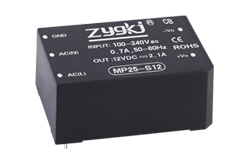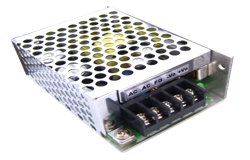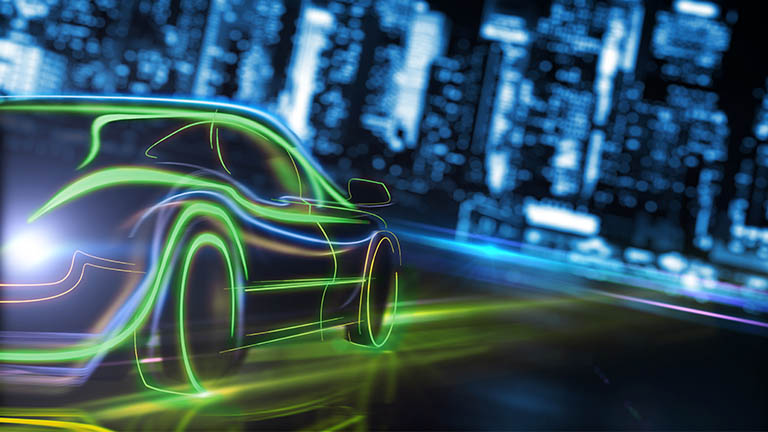news
How to buy DC-DC Converter and what it does
Author: ZYG Power Module Time: 2022-10-17
When looking for a DC-DC converter, it’s important to consider your needs and choose the right converter for the job. There are a wide variety of converters on the market, so it’s important to do your research and find the one that best meets your requirements.
What is a DC-DC converter?
A DC-DC converter (direct current to direct current converter) is an electronic converter that converts a direct current (DC) input to a direct current output. DC-DC converters are often used to convert the voltage from the battery to a level suitable for powering electronic devices. DC-DC converters are also used in power supplies to convert an AC input voltage to a DC output voltage.

What are the different types of DC-DC converters?
There are many different types of DC-DC converters on the market, each with their own advantages and disadvantages. In this chapter, we’ll look at the three most common types: buck, boost, and buck-boost converters.
Buck converters are the most common type of DC-DC converter. They are used to reduce the voltage of DC signals. Buck converters are often used with batteries to keep the battery voltage stable.
A boost converter is used to increase the voltage of a DC signal. They are typically used to power devices that require a higher voltage than the power supply can provide.
A buck-boost converter is a combination of buck and boost converters. They can reduce or increase the voltage of DC signals, making them a versatile choice for many different applications.
How to choose the right DC-DC converter for your needs
There are a few things you need to keep in mind when choosing a DC-DC converter. The most important decision is what voltage the converter needs to output. This will determine the input voltage and current requirements of the converter.
Next, you need to consider the size and weight of the converter. If you need a small and light converter, you will need to sacrifice some power. Conversely, if you need more power, you need to increase the size and weight of the converter.
Finally, you need to consider the price and availability of converters. Some converters are more expensive than others, and some are only available from a few suppliers. It’s important to find a converter that meets both your specific needs and your budget.

Tips for Using DC-DC Converters
If you’re using a DC-DC converter in your project, here are some tips to help you get the most out of it:
1. Make sure the converter is compatible with your project’s voltage.
2. Check the converter’s current rating to make sure it is suitable for your project.
3. Pay attention to how much power the converter can handle.
4. Make sure the converter is properly cooled.
5. Make sure the converter is properly shielded from EMI.
By understanding you can find the right DC-DC converter for you.
Previous: Get the Best AC-DC Converter Manufacturer for Your Product
Next: How to choose a power module and precautions, each is very important
relevant information
-
2023-5-13
12V AC to DC Converter for LED
Introduction In this article, we will be discussing the 12V AC to DC converter for LED lights. The purpose of this converter is to transform the alternating current (AC) voltage into direct current (DC) voltage in order to power LED lights. What is a 12V AC to DC converter for LED? A 12V AC to DC converter is an electronic device that changes the voltage of an alternating current power source to a direct current power source. This converter is specifically designed for LED lights, which require a constant DC voltage to function properly. Why do we need a 12V AC to DC converter for LED? LED lights are highly popular due to their energy efficiency and long lifespan. However,...
View details -
2023-8-17
Efficient AC to DC Converter for LED Lighting: Transforming 12V AC into Reliable DC Power
Introduction In recent years, LED lighting has gained significant popularity due to its energy efficiency, long lifespan, and environmental friendliness. However, LED lights require direct current (DC) power to operate effectively, while most homes and buildings use alternating current (AC) power. To bridge this gap and enable efficient LED lighting, an AC to DC converter is required. This article explores the importance of these converters, their functioning principles, and highlights the benefits of using them in LED lighting systems. Importance of AC to DC Converters for LED Lighting AC to DC converters play a crucial role in LED lighting systems as they convert the incoming AC power to the required DC power. Without these converters, it would be impossible to...
View details -
2023-7-8
AC/DC Power Supply Module: Ensuring Efficient Energy Conversion and Reliable Performance
Introduction In today's fast-paced world, where technology plays a vital role in our daily lives, the need for efficient power supply modules has become crucial. AC/DC power supply modules are designed to convert the alternating current (AC) from the main power grid into direct current (DC) suitable for powering electronic devices. These modules play an essential role in ensuring energy conversion efficiency and reliable performance. This article will delve into the significant aspects of AC/DC power supply modules, highlighting their importance and the benefits they offer. Efficient Energy Conversion One of the primary objectives of an AC/DC power supply module is to provide efficient energy conversion. With the increasing demand for energy-efficient devices, the need for power supply modules that...
View details -
2023-4-18
AC-DC Converter: Converting Alternating Current to Direct Current
An AC-DC converter is an electronic device that converts Alternating Current (AC) to Direct Current (DC). The conversion process involves rectifying AC voltage and filtering it to produce a smooth DC output. The converter operates using a combination of electronic components that work together to produce the desired output. The process of converting AC to DC involves several stages. First, the AC voltage is rectified using diodes to produce a pulsating DC voltage. The pulsating DC voltage is then filtered to produce a smooth DC output. The filtering process involves using capacitors and inductors to remove unwanted ripple and noise from the DC voltage. There are different types of AC-DC converters, including half-wave rectifiers, full-wave rectifiers, and bridge rectifiers. Half-wave...
View details -
2023-7-25
High quality Medical Power Series: Unlocking the Secrets of Healthcare Excellence
In today's fast-paced and ever-evolving world, the healthcare industry plays a vital role in ensuring the well-being of individuals and communities. With advancements in technology and the constant need for innovation, healthcare excellence has become a focal point for organizations worldwide. The Medical Power Series: Unlocking the Secrets of Healthcare Excellence aims to shed light on the strategies and practices employed by healthcare professionals to deliver exceptional care and achieve remarkable outcomes. The first key aspect of healthcare excellence lies in the recruitment and retention of highly skilled and compassionate medical professionals. The series emphasizes the importance of selecting individuals who possess not only the requisite expertise but also a genuine passion for patient care. Through comprehensive screening processes and...
View details -
2023-5-10
AC-DC Power Supply Guide: The Basics of AC-DC Power Supply
AC-DC power supplies are essential components of many electronic devices that we use in our daily lives. They convert alternating current (AC) from a power source into direct current (DC) that can be used to power electronic circuits. The basic principle behind an AC-DC power supply is the use of a transformer to step down the voltage of the incoming AC power to a lower voltage that is suitable for the electronic device being powered. The transformer is followed by a rectifier circuit that converts the AC voltage into a pulsating DC voltage. This pulsating DC voltage is then filtered by a capacitor to produce a smooth DC voltage that can be used to power electronic circuits. The transformer used...
View details


















